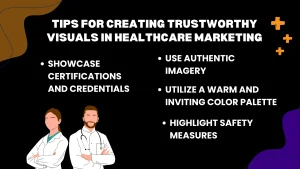The Critical Role of Medical Graphic Design in Building Trust and Improving Patient Communication
Healthcare companies face a unique challenge: they must establish trust with patients who may be overwhelmed, confused, or scared when communicating complex medical information. The level of competence and trustworthiness your brand exudes can significantly influence whether a patient chooses your practice over the competition.
Webugol is an expert in medical graphic design that revolutionizes communication in the healthcare industry. Our team accepts that good design establishes credibility, simplifies difficult information, and connects healthcare providers and patients.
As the healthcare industry becomes more competitive, hospitals, clinics, and new healthcare startups understand that investing in strategic website design has a direct influence on patient acquisition and retention.
The Critical Role of Graphic Design in Healthcare Marketing
A simple, professional medical graphic design is an important part of effective healthcare marketing. It ensures patients and their families receive clear, trustworthy, and understandable communication. In the medical field, where people need accurate and easy-to-find information, important aspects include legibility, credibility, and user experience. Well-designed healthcare websites, brochures, and infographics improve readability and brand trust.
Simplifying complicated medical information, including procedures, benefits, and services, requires effective graphic design. Healthcare professionals may simplify complex topics for varied audiences with clear visuals, simple text, and easy design.
Benefits of Effective Medical Visuals:
- Explains complex medical concepts with clear, engaging visuals.
- Strengthens brand identity to build trust.
- Simplifies information on procedures, treatments, and services.
- Boosts patient education and informed decision-making.
- Increases engagement with visually appealing campaigns.

Webugol’s Specialized Approach to Medical Graphic Design
Simplicity and Clarity
In medical marketing, design and graphics should be accessible and clean. Cutting clutter helps patients focus on the most important information and digest details. Simple fonts make text easier to read, and presenting complicated medical information in a clear and organized way makes it easier for more people to understand.
The thoughtful use of white space further improves legibility. It keeps readers from feeling overloaded by breaking up complex information, giving them breathing room, and focusing their attention on the important details. Visual clarity helps patients and consumers understand vital health information and make informed decisions.
Prioritizing Trust and Credibility
Medical graphic design credibility and professionalism depend on high-quality illustrations. A polished appearance is produced by pertinent and clear images, which reassure consumers of the organization’s knowledge and attention to detail. Healthcare providers with high-quality imagery are more trustworthy to patients because they convey caring and reliability.
Including certifications, logos, and accreditations in designs further strengthens trust. These components offer concrete evidence of an emphasis on providing high-quality care and following industry norms. Feature these prominently to build trust with new and returning patients.
Medical graphic design also heavily relies on color psychology. Green represents growth, wellness, and healing, while blue represents harmony, trust, and stability, calming patients. Green represents development, health, and healing, while blue evokes serenity, stability, and trust, which helps patients feel at ease.

Data Visualization and Legibility
Infographics, charts, and graphs help patients understand complex medical data. Using simple, easy-to-read illustrations and color coding might help people comprehend better, especially those who aren’t familiar with medical terms. Text contrast improves legibility for patients with different visual acuity. Accessible medical graphic design and clear type make sure that even people who don’t know much about medicine can understand crucial health information. Creating patient-friendly resources requires these elements.
User-Centric Design
Designing with the target audience in mind is crucial for creating meaningful and impactful healthcare experiences. By keeping the requirements of patients in mind, a user-centric approach makes websites, marketing collateral, and services more approachable and interesting. Responsive design plays a key role by ensuring that healthcare websites function seamlessly across all devices, especially mobile, where many users access information on the go. This flexibility improves usability and convenience, making it simple for patients to locate the data or services they require.
A user-centric strategy prioritizes clarity, navigation, and accessibility to build trust and improve patient experience. It also encourages increased participation because patients are more likely to use services that are easy to understand and thoughtfully designed.
Essentials of User-Centric Medical Graphic Design
- Clear Navigation: Make sure patients can find what they need quickly.
- Mobile-Friendly Interfaces: Make webpages and other assets work better on mobile devices.
- Personalized Content: Make sure the information you give is relevant to the people you want to reach.
- Accessible Medical Graphic Design: Include screen-reader compatibility, legible typefaces, and color contrast.
- Fast Load Times: Performance should be fast and responsive for a smooth experience.
These guidelines can help healthcare providers create resources and platforms that better serve patients’ needs while enhancing their relationships with the communities they serve.
Humanizing Medical Graphic Design
Adding human-centered images, like photos of healthcare professionals, makes medical content more relevant and genuine. These images convey empathy, strengthening audience bonds. When patients see the people who care for them, it helps them trust and reduces feelings of isolation.
Diversity in medical imaging matters. Featuring visuals that reflect different ages, ethnicities, genders, and abilities ensures that a broader range of patients feels seen and valued. This strategy promotes healthcare communication equity by creating a welcoming environment and respecting everyone.

Compliance and Ethical Considerations
Using patient data or photos requires adherence to pertinent data protection laws and medical standards, including HIPAA. These rules protect patient privacy and handle sensitive data. In addition to protecting patients, strict adherence to these laws increases public confidence in healthcare professionals.
Following commercial and ethical norms while designing medical marketing materials is crucial. This makes sure that all the information is correct and polite, so there are no misleading statements. Legal and ethical compliance helps build credibility and promotes better care and patient-centered communication.
Transform Your Healthcare Brand Today
Healthcare providers and their patients can get a lot out of using medical graphic design that is straightforward, clear, and trustworthy. Clear visuals simplify complex information for patients. This can help people make smart choices regarding their care and cut down on confusion.
Detail and precision in professional and well-designed products build trust. Patients are more inclined to trust healthcare professionals who value openness and clarity.
Design quality also improves the experience. When communication is professional and easy to understand, patients feel respected and valued. Clarity and professionalism help healthcare providers develop trust, understanding, and connections with patients. For expert medical graphic design that builds trust and enhances patient communication, contact Webugol today!


